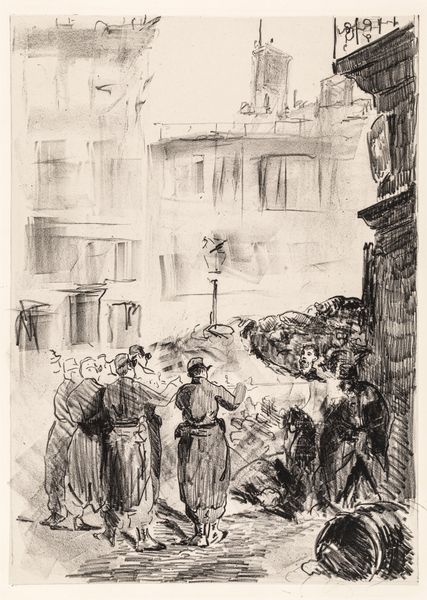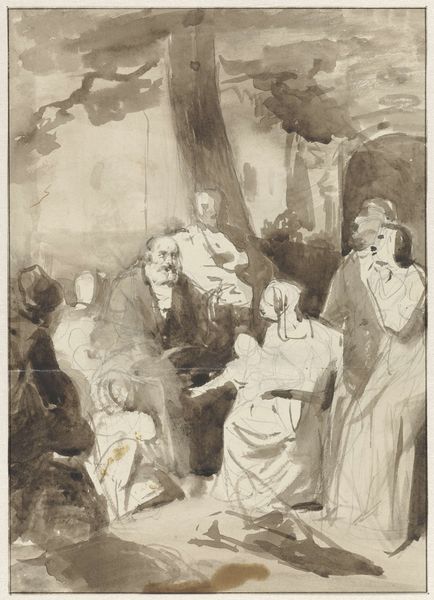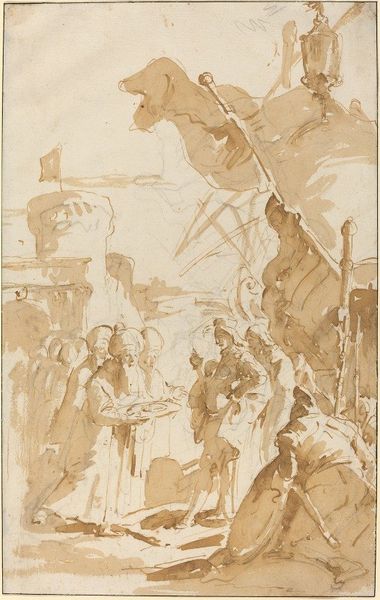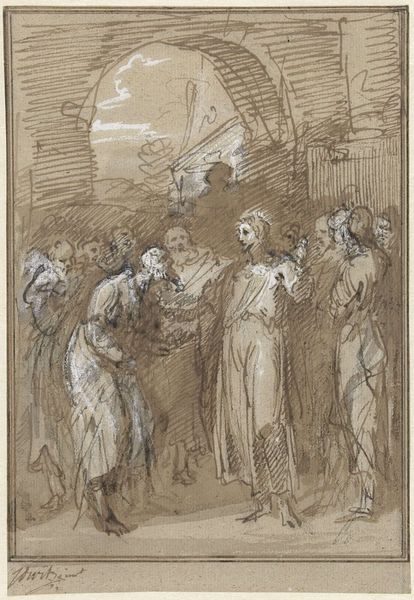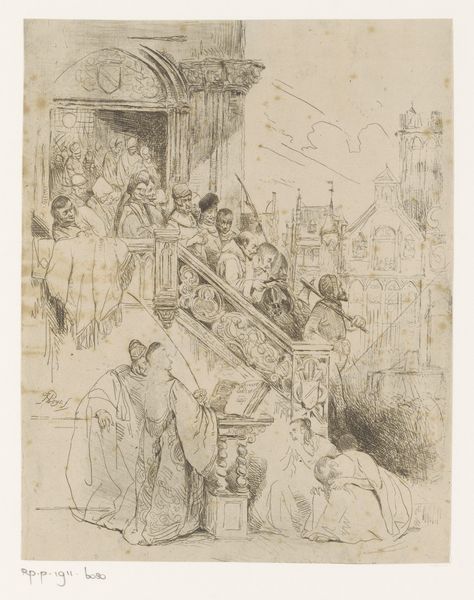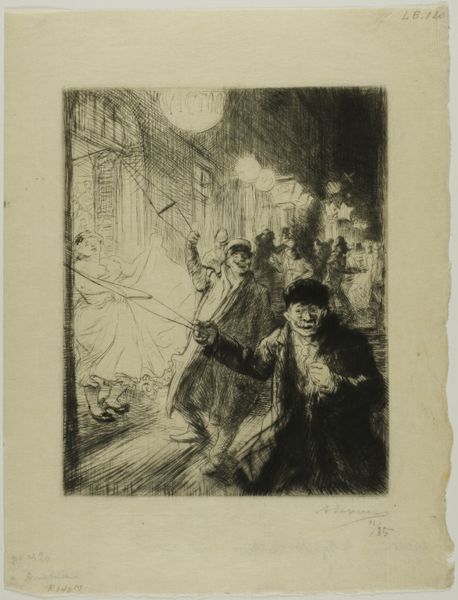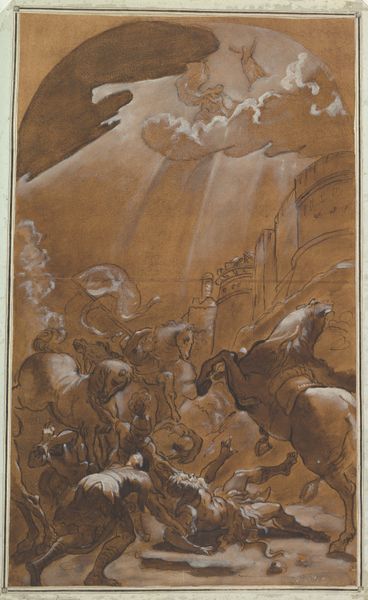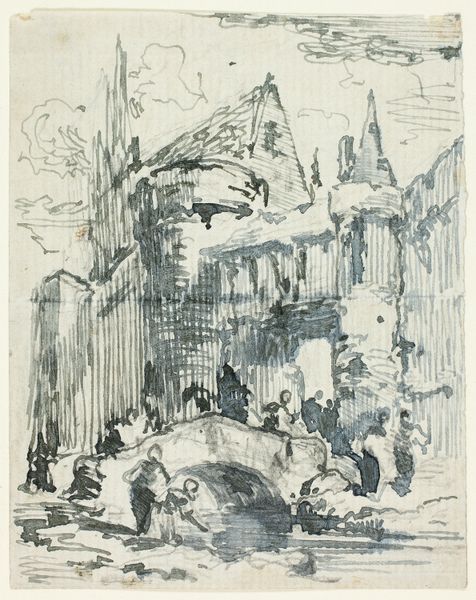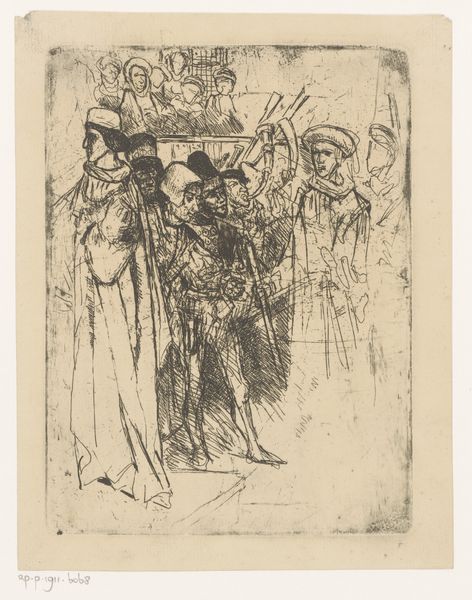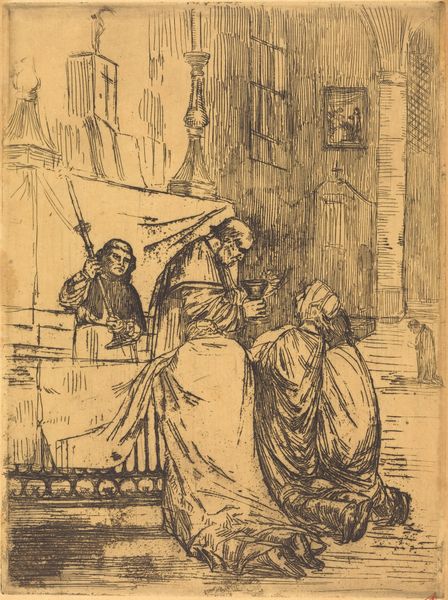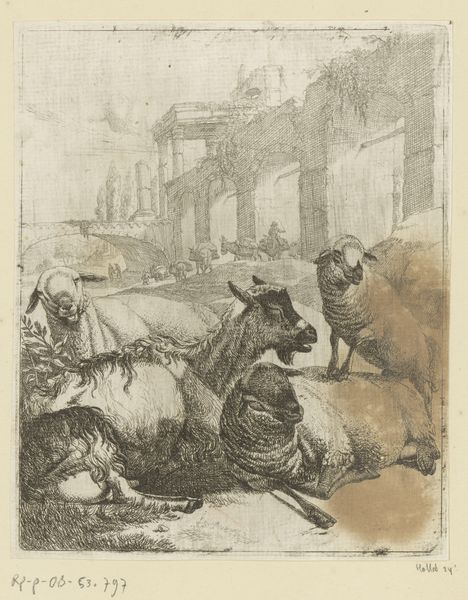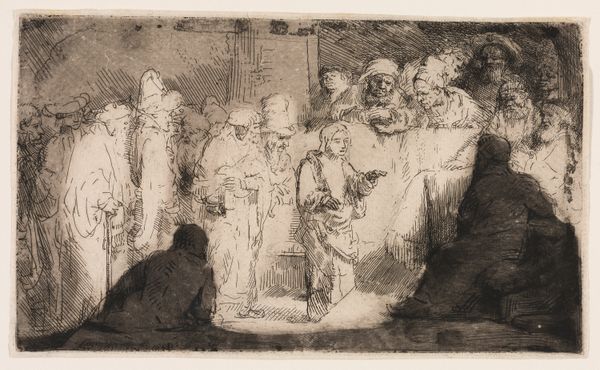
Vrouw achter de wal van een belegerde stad (Kenau Simonsdochter Hasselaer?) 1822 - 1880
0:00
0:00
Dimensions: height 274 mm, width 195 mm
Copyright: Rijks Museum: Open Domain
Editor: This drawing, titled "Vrouw achter de wal van een belegerde stad (Kenau Simonsdochter Hasselaer?)" by Reinier Craeyvanger, made between 1822 and 1880, depicts a woman amongst a crowd. It looks like it’s made with watercolor, ink, and charcoal. The monochromatic tones create a sense of unease, a murky atmosphere I find interesting. How do you interpret this work through its formal elements? Curator: Let us begin by observing the overall composition. Note the dynamic arrangement of shapes, where light and shadow are used to create depth, though depth of perspective is not the intent here. The restricted palette reinforces this lack of dimension. What visual strategies do you think the artist employs to command the viewer’s attention? Editor: The contrast between the central female figure and the surrounding forms definitely grabs my attention. The relative clarity of her figure against the indistinct crowd. Is it this emphasis on form that is important? Curator: Precisely. Observe the treatment of line and form throughout the composition. The artist uses delicate, almost ethereal lines to define shapes, building textures with the bare minimum amount of markings to represent material. How do these choices affect the reading of space within the picture plane? Editor: The use of line does flatten the space, but it also creates movement; there's no resting point for the eye. Given that, can you comment on the Romanticist influences on this piece, keeping in mind the tension between form and context? Curator: Setting aside its possible historical referents, focus on how the artist utilises colour and tone to structure the piece, creating mood from dark pigments, layered to provide differing tonal scales. Ultimately, the appeal of this artwork comes down to the aesthetic experience that the composition gives rise to, separate from cultural or social influences. Editor: I see, by emphasizing its structure and compositional elements, you detach the artwork from a purely narrative context and emphasize its aesthetic qualities and that is where true art appreciation begins! Thanks. Curator: Indeed! Understanding how artistic elements such as colour, tone, and composition contribute to an artwork’s effect is central to this approach. Thank you.
Comments
No comments
Be the first to comment and join the conversation on the ultimate creative platform.
